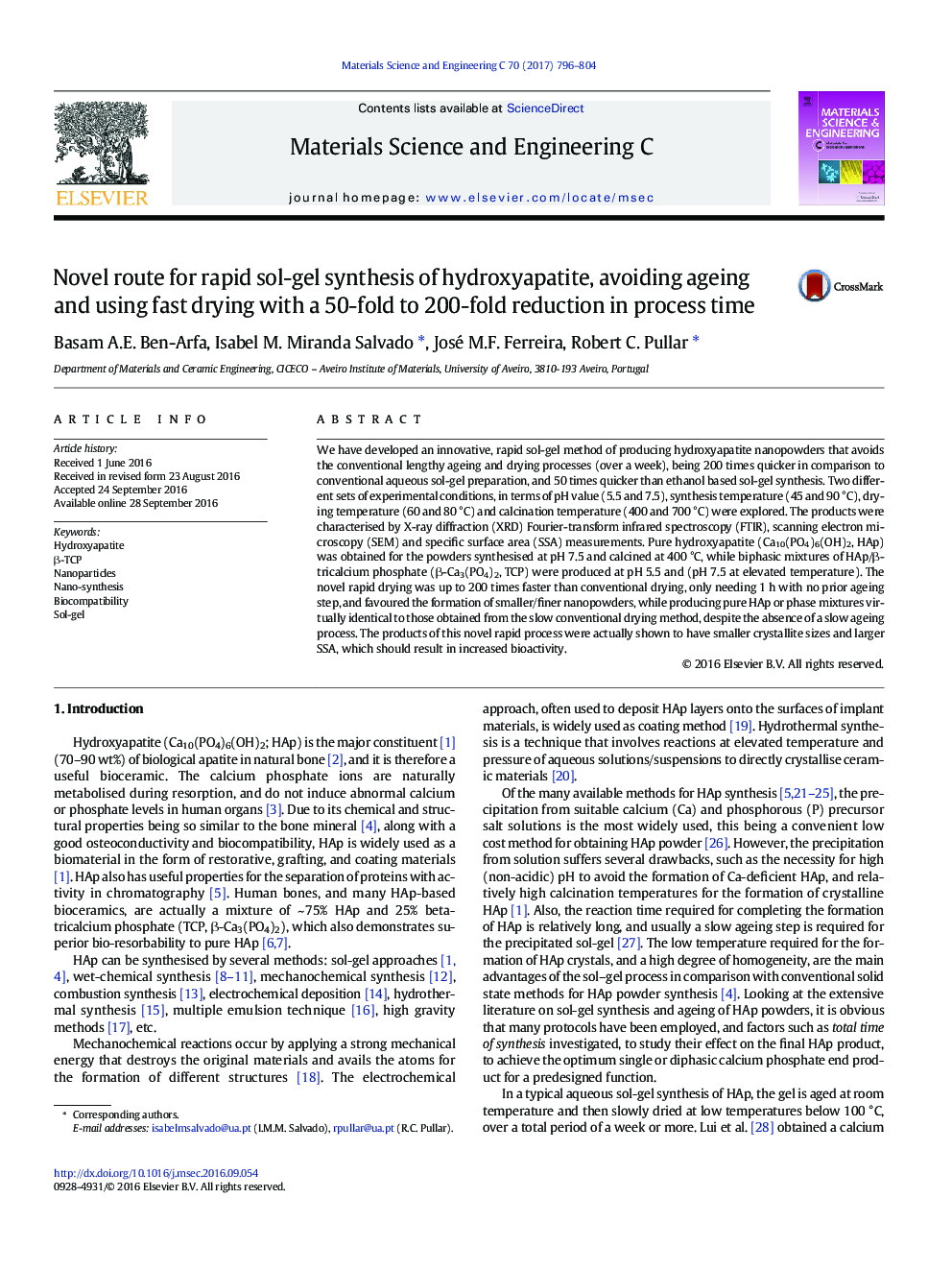| Article ID | Journal | Published Year | Pages | File Type |
|---|---|---|---|---|
| 6481424 | Materials Science and Engineering: C | 2017 | 9 Pages |
â¢Fast, novel sol-gel synthesis of HAp nanopowders, requiring just 1 h for dryingâ¢A much shortened process, 200 times faster than the usual slow drying/ageing timesâ¢Compares rapidly produced HAp with that from a typical 216 h drying/ageing processâ¢Both methods produce very similar products, but rapid HAp had a larger surface area.â¢Both methods produced pure HAp at 400 °C, and a HAp/TCP mix at 700 °C.
We have developed an innovative, rapid sol-gel method of producing hydroxyapatite nanopowders that avoids the conventional lengthy ageing and drying processes (over a week), being 200 times quicker in comparison to conventional aqueous sol-gel preparation, and 50 times quicker than ethanol based sol-gel synthesis. Two different sets of experimental conditions, in terms of pH value (5.5 and 7.5), synthesis temperature (45 and 90 °C), drying temperature (60 and 80 °C) and calcination temperature (400 and 700 °C) were explored. The products were characterised by X-ray diffraction (XRD) Fourier-transform infrared spectroscopy (FTIR), scanning electron microscopy (SEM) and specific surface area (SSA) measurements. Pure hydroxyapatite (Ca10(PO4)6(OH)2, HAp) was obtained for the powders synthesised at pH 7.5 and calcined at 400 °C, while biphasic mixtures of HAp/β-tricalcium phosphate (β-Ca3(PO4)2, TCP) were produced at pH 5.5 and (pH 7.5 at elevated temperature). The novel rapid drying was up to 200 times faster than conventional drying, only needing 1 h with no prior ageing step, and favoured the formation of smaller/finer nanopowders, while producing pure HAp or phase mixtures virtually identical to those obtained from the slow conventional drying method, despite the absence of a slow ageing process. The products of this novel rapid process were actually shown to have smaller crystallite sizes and larger SSA, which should result in increased bioactivity.
Graphical abstractDownload high-res image (432KB)Download full-size image
